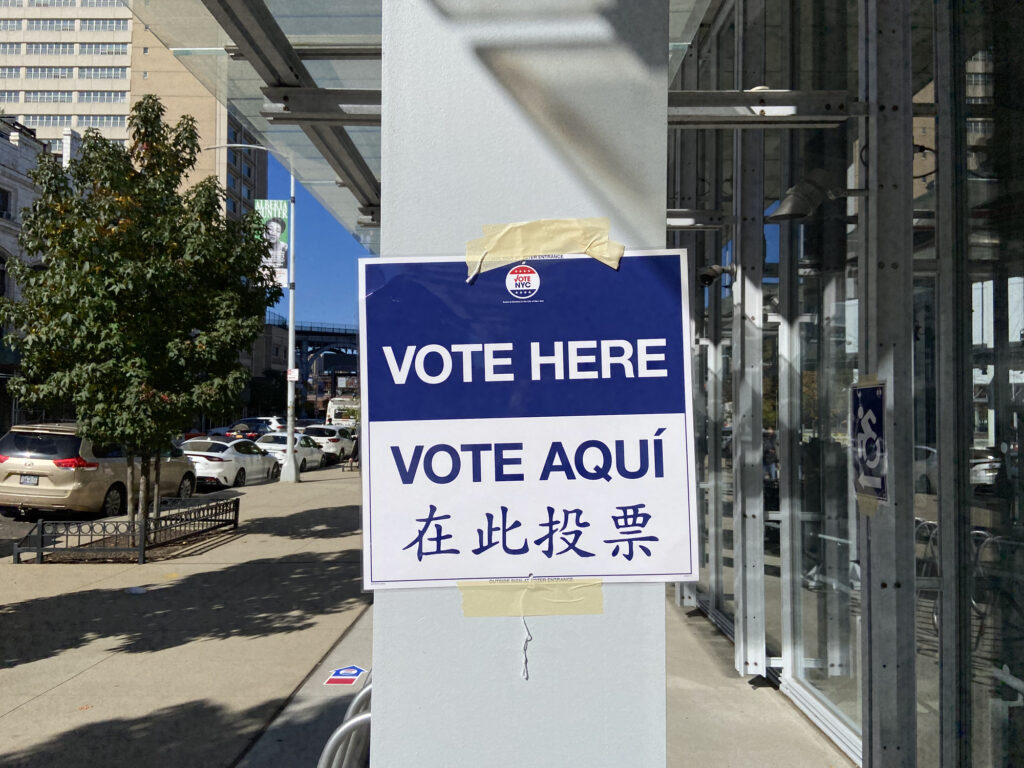The Latino Vote Is Up For Grabs, But Which Party Is Best Positioned to Capitalize?


For over 30 years, we’ve been involved with political campaigns at the highest level of U.S. politics. We’ve watched as both parties had some successes and some failures with Latino voters. Now, we can say definitively that neither party has figured out the fastest-growing share of the American electorate.
Latino voters have become the most dynamic and influential voting bloc in our elections. They have almost single-handedly determined who controls both chambers of Congress and the White House. Over the past few cycles, Latino voters have shifted more than any other group of American voters. This once-solidly Democratic voting bloc, with some small outliers like Cuban voters in South Florida, has grown to be larger than the margin of victory in every swing state.
Latino voters are changing rapidly. Our communities’ voters have moved decisively away from the Democratic Party in their voting habits, but this doesn’t necessarily mean they are becoming Republicans. Latinos are economically populist, pocketbook voters, and while there’s no doubt that their voting performance is shifting rightward, it’s better to describe what’s happening as the emergence of a disenfranchised, anti-establishment voting bloc that feels disaffected from both political parties. There’s a reason why two old white guys from the Northeast have over-performed with Latino voters over the past decade. Both Bernie Sanders and Donald Trump are attacking not only institutions that have failed working class voters, but their own political parties for being part of that failure. Latinos are responding to that anti-establishment message.
This vote, and how we approach it, will shape both parties — and the country — for years to come. There are several factors this industry will need to contend with if it’s going to succeed in reaching Latino voters. On average, Latino voters are 10 years younger than white and Black voters. Fifteen years ago, they were mostly immigrants and Spanish speakers. Now, a majority are second- and third-generation Americans who mostly consume English-language media and entertainment. Over 60 percent are of Mexican origin, but other groups are making significant gains.
Even though Latino voters are becoming one of the most important parts of the electorate, senior Latino operatives are still few and far between. In the 2024 election, there wasn’t a single Latino campaign manager in a top-tier House or Senate race, by our count. Moreover, there was only one majority-Latino-owned firm involved in any of those races.
While there has been a push to hire senior Latino staff or partners in established media and digital firms, driven by mandates from groups like the DCCC and Planned Parenthood, most of these hires are in sales roles, not in strategy or creative. We still don’t see senior Latino strategists in positions of budget authority in campaign or consulting firm structures in either party. Of the more than 500 firms that attended the American Association of Political Consultants’ 2025 Pollie Awards, fewer than 10 were majority-Latino owned.
Latino voters aren’t just multi-ethnic and multi-lingual. They are multi-generational and becoming more complex, yet campaigns are still messaging towards them as if we’re talking to their grandparents. That’s because the same consultants keep using the same outdated playbook. For example, well over 70 percent of Latino voters consume news and entertainment in English, yet almost no campaign runs a separate English-language track for these voters. English-language media and digital ads are focused on persuadable 40-year-old white, suburban voters. Meanwhile, Latino English speakers rarely see any political content targeted specifically to them despite being the fastest-growing, persuadable voters in the country. We don’t watch the same content as non-Latinos.
Latinos make up the largest group of voters without a college degree. The education divide reshaping the country is directly correlated to changing Latino voting habits. The future working class is Latino and becoming more so every day.
In 2024, Latino men swung 12 percentage points further toward Republicans compared to just four years prior, when they had already swung 8 points to the right in the previous cycle. This is a glaring example of the dramatic movement within this electorate. In 2024, the top two issues by ad spending were immigration for Republicans and abortion for Democrats, according to the ad tech firm AdImpact.
Looking to the future, these voters, because of their age, education levels and cultural background, are almost exclusively digital consumers of news and entertainment. They’re becoming a larger and more decisive part of the electorate in every election, yet they remain largely excluded from the power structures of both parties.
The future is Latino and that future looks nothing like Latinos of the past. The party that wins the hearts and minds of the fastest-growing group of working class voters will be the dominant party of the next generation.
Mike Madrid is a nationally recognized, California-based political consultant with an expertise on Latino voting trends and voter behavior and the author of ”The Latino Century.” Chuck Rocha is President and Founder of Solidarity Strategies.
This piece appears in the commemorative 45th Anniversary print edition of Campaigns & Elections magazine.
Editor’s Note: This article has been updated to clarify that fewer than 10 majority-Latino-owned political consulting firms attended the American Association of Political Consultants’ 2025 Pollie Awards. An earlier version of this article suggested that there are less than 10 majority-Latino-owned firms in the U.S.
